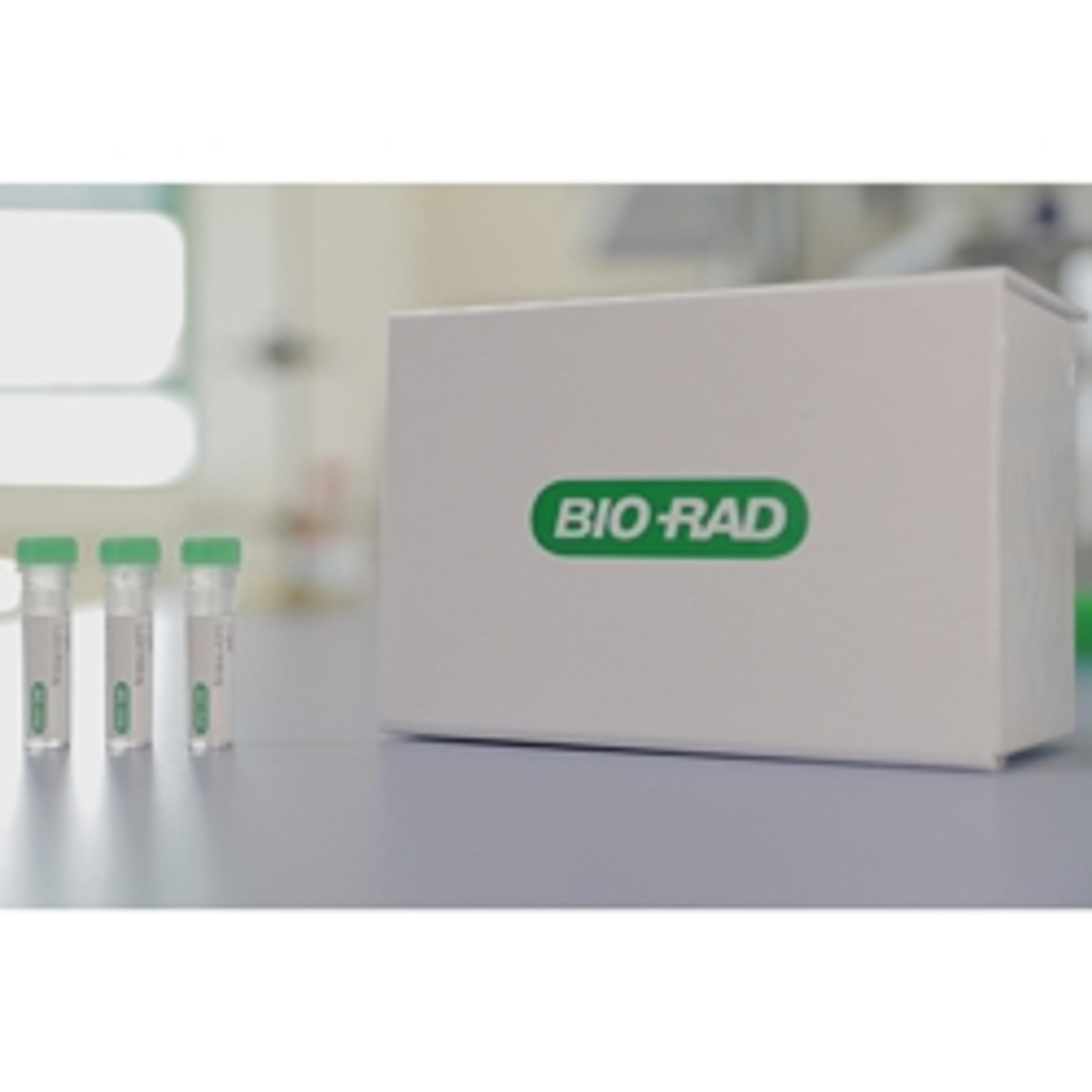Transform your immunoassay: Choose the right antibody for you
Dr. Christian Frisch explains how to design a reliable assay and reveals how Bio-Rad and Sartorius teamed up to help scientists achieve peak immunoassay performance
12 Mar 2021

Immunoassay development can be complex, time-consuming, and expensive. Optimum immunoassay performance relies on the careful selection of antibodies that increase sensitivity and specificity, whilst reducing cross-reactivity and batch-to-batch variability. To avoid common setbacks and achieve optimum assay performance, it is critical users choose suitable antibodies.
Here, Dr. Christian Frisch, R&D manager at Bio-Rad Laboratories, tells SelectScience® about the custom HuCAL® recombinant antibody generation service and how TrailBlazer Antibodies can help to develop robust assays that promise outstanding performance. We also find out more behind the collaboration between Bio-Rad and Sartorius, and how they joined forces to transform immunoassay development for the better.
SS: Tell us a little about yourself and your work
CF: I am an R&D manager for custom recombinant antibodies at Bio-Rad. I have been leading the antibody generation and characterization group since 2003, and my group has generated more than 40,000 antibodies for custom projects over the past 17 years. We use a recombinant antibody library in the fragment antigen-binding (Fab) format, called HuCAL PLATINUM, for custom antibody generation. This library was made by gene synthesis, so it is not restricted by a tolerance mechanism and contains 45 billion functional human antibodies. Antibody generation is done in vitro using a proprietary phage display method, so there is full control over the selection process, and we can guide the selection towards a certain specificity.
SS: What are the biggest challenges/bottlenecks your customers are facing when choosing suitable antibodies?
CF: The biggest challenge is to locate highly specific antibodies, which have the right kinetic properties. In order to have one or a pair of antibodies that work in an immunoassay, it is often necessary to test several antibodies. With our technology we can address all these points with guided selection strategies, for example, blocking with closely related antigens. We can select highly specific antibodies, and we measure the off-rate of many clones early in our process to generate antibodies fast.
SS: Can you tell us more about your anti-idiotypic antibodies made via HuCAL technology?
CF: Anti-idiotypic antibodies are specific for one antibody, for example, a drug antibody. We have classified anti-idiotypic antibodies into three types according to their binding modes and properties:
Type 1 are paratope-specific antibodies that detect free drug. In contrast, Type 2 antibodies bind to a region outside of the paratope and are therefore not inhibitory, and the third class, Type 3, are drug/drug-target complex-specific antibodies that only bind the complex and do not bind free drug or drug target. We can generate all of these using guided selection. Our technology can help select drug/drug-target complex binders or non-paratope-specific anti-idiotypic antibodies by selection on the drug/drug-target complex. There are no matrix effects with our antibodies since we add human serum during the selection process. We achieve high affinities and can therefore build very sensitive assays.
SS: Can you tell us more about your TrailBlazer Antibodies and how they help to achieve robust assays?
CF: We have incorporated SpyTag/SpyCatcher technology into our custom antibody generation service, to make 'TrailBlazer Antibodies.’ This service provides you with an extensive antibody toolbox that enables rapid development of robust assays. The SpyTag/SpyCatcher technology is based on a fibronectin-binding protein from Streptococcus pyogenes. This protein autocatalytically forms an intrachain isopeptide bond between the sidechains of a lysine and an aspartic acid. It has been shown that after splitting this domain into a small peptide, the SpyTag, and a small protein, the SpyCatcher, both are able to form this covalent bond when mixed. This reaction is rapid (completed in less than one hour), quantitative, specific, and very robust in terms of buffer conditions and additives.
We have added the SpyTag peptide as a tag to the HuCAL Fab antibody, and we made a set of SpyCatchers to couple to the SpyTagged Fab. The Catchers enable site-directed conjugation to HRP or biotin or other labels, and the formation of bivalent Fab and Ig-like constructs with human, mouse, and rabbit isotypes. We have modified the SpyCatcher and BiCatcher (which is two SpyCatchers connected by a linker) by adding one or three cysteine residues, which facilitates site-specific conjugation, and results in a fixed degree of labeling. The result is an antibody with a fixed number of labels at a defined position and no labels at or near the antigen-binding site.
TrailBlazer Antibody benefits: Dr. Frisch shares a case study
Here is an example of how TrailBlazer Antibodies can help in the development of PK (pharmacokinetics) or ADA (anti-drug antibody) assays using anti-idiotypic antibodies:
Screening of the antibodies is done in monovalent SpyTagged Fab format which allows off-rate ranking and selection of antibodies with the best affinity. Then for selection of antibody pairs for PK assay, part of the Fab material is conjugated to an HRP-labeled BiCatcher, making the Fab bivalent so giving it a higher avidity and adding a label that does not modify the binding site of the Fab itself.
This way, all antibodies can be tested against each other easily and very fast. And for use of the antibodies as controls in ADA assays, you can couple them to the different Fc catchers and make an Ig-like molecule within one hour.
SS: Can you tell me a bit about your collaboration with Sartorius?
CF: We have a long relationship with the Octet® Team, which is now part of Sartorius. We have used bio-layer interferometry (BLI) for many years and purchased our first Octet® RED384 machine almost 10 years ago. At this time, we did not achieve an off-rate ranking with our crude E. coli lysates when working with machines using microfluidics. We found using the Octet® was easy and it has been in heavy use since then.
SS: How does the Octet® achieve affinity ranking and help meet your scientific goals?
CF: Affinity is the key to selecting good antibodies. For a custom antibody generation project, we typically get more than 100 hits in ELISA screening and would then need to find out what the best affinity antibodies are. The ELISA signal is not a reliable parameter since it is also influenced by the amount of Fab in the lysate. We do not want to sequence 100 clones and then purify all the unique antibodies and measure affinities. Therefore, performing an off-rate ranking with a large number of non-purified antibodies is important for fast and efficient selection of the antibodies with the best affinity.
This off-rate ranking is a straightforward process using the Octet® machine. For example, streptavidin-coated sensors are dipped into a solution containing biotinylated antigen and after a wash step, they are dipped into the crude E. coli lysate containing Fab antibody. After another dip into buffer, the dissociation of each Fab is measured in real time. The Octet® RED384 can handle 16 sensors simultaneously, so the total time needed for 96 samples is less than two hours. This way, we rapidly identify antibodies with the preferred binding kinetics. Most important for us is that the instrument is ‘fluidics free’ so that we can work with crude bacterial lysate. No clogging can occur and therefore the machine is low maintenance. This process is also label-free, we do not need to modify our antibodies. Finally, this system is very easy to operate, it is simple with very intuitive software.
SS: What do you see as the future developments in this area?
CF: I think an even higher throughput and lower cost of each measurement would be desirable. For most projects, we could perform the off-rate ranking with even more clones, but currently this would be too costly and time-consuming.
Find more news and resources in the Engineered Antibodies Special Feature>>


